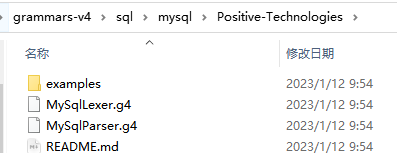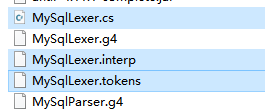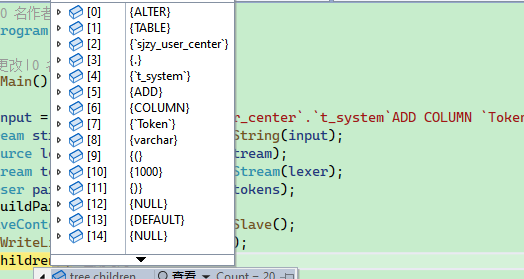Environment Setup and Generation
First, install Java version 8 or above.
Open https://www.antlr.org/download.html,
find "ANTLR tool itself", or directly click on https://www.antlr.org/download/antlr-4.11.1-complete.jar to download the package.

Then open https://github.com/antlr/grammars-v4
to download the corresponding syntax analysis template.

Execute the command to generate Java code.
java -jar antlr-4.11.1-complete.jar .\MySqlLexer.g4 -Dlanguage=Java
Execute the command to generate C# code:
java -jar antlr-4.11.1-complete.jar .\MySqlLexer.g4 -Dlanguage=CSharp
java -jar antlr-4.11.1-complete.jar .\MySqlParser.g4 -Dlanguage=CSharp

C# Analysis of SQL
Import the Antlr4.Runtime library.
C# can analyze SQL like this:
internal class Program
{
static void Main()
{
String input = "ALTER TABLE `sjzy_user_center`.`t_system`ADD COLUMN `Token` varchar(1000) NULL DEFAULT NULL COMMENT '子系统token' AFTER `AssociatedInternalSubsystem`;";
ICharStream stream = CharStreams.fromString(input);
ITokenSource lexer = new MySqlLexer(stream);
ITokenStream tokens = new CommonTokenStream(lexer);
MySqlParser parser = new MySqlParser(tokens);
parser.BuildParseTree = true;
StartSlaveContext tree = parser.startSlave();
Console.WriteLine(tree.ToStringTree());
P(tree.children);
}
static void P(IList<IParseTree> tree)
{
foreach (var item in tree)
{
if (item.ChildCount != 0)
{
List<IParseTree> child = new List<IParseTree>(0);
for (int i = 0; i < item.ChildCount; i++)
{
child.Add(item.GetChild(i));
}
P(child);
}
else
{
Console.WriteLine(item.ToStringTree());
}
}
}
}

Each Token corresponds to a Type, which can be found in the MySqlLexer.tokens or MySqlParser.tokens files.
First, use tree.children to get all child nodes, returning a list of IList<IParseTree>, where each IParseTree contains a Payload property that records all the attributes of the Token.
var token = item.Payload as CommonToken;
For example, STRING_LITERAL indicates that the keyword belongs to a name.
If you want to find database or table names, or field names, you can search like this:
if(token.Type == MySqlParser.STRING_LITERAL)
{
}
if (token.Type == 1141)
{
}

文章评论